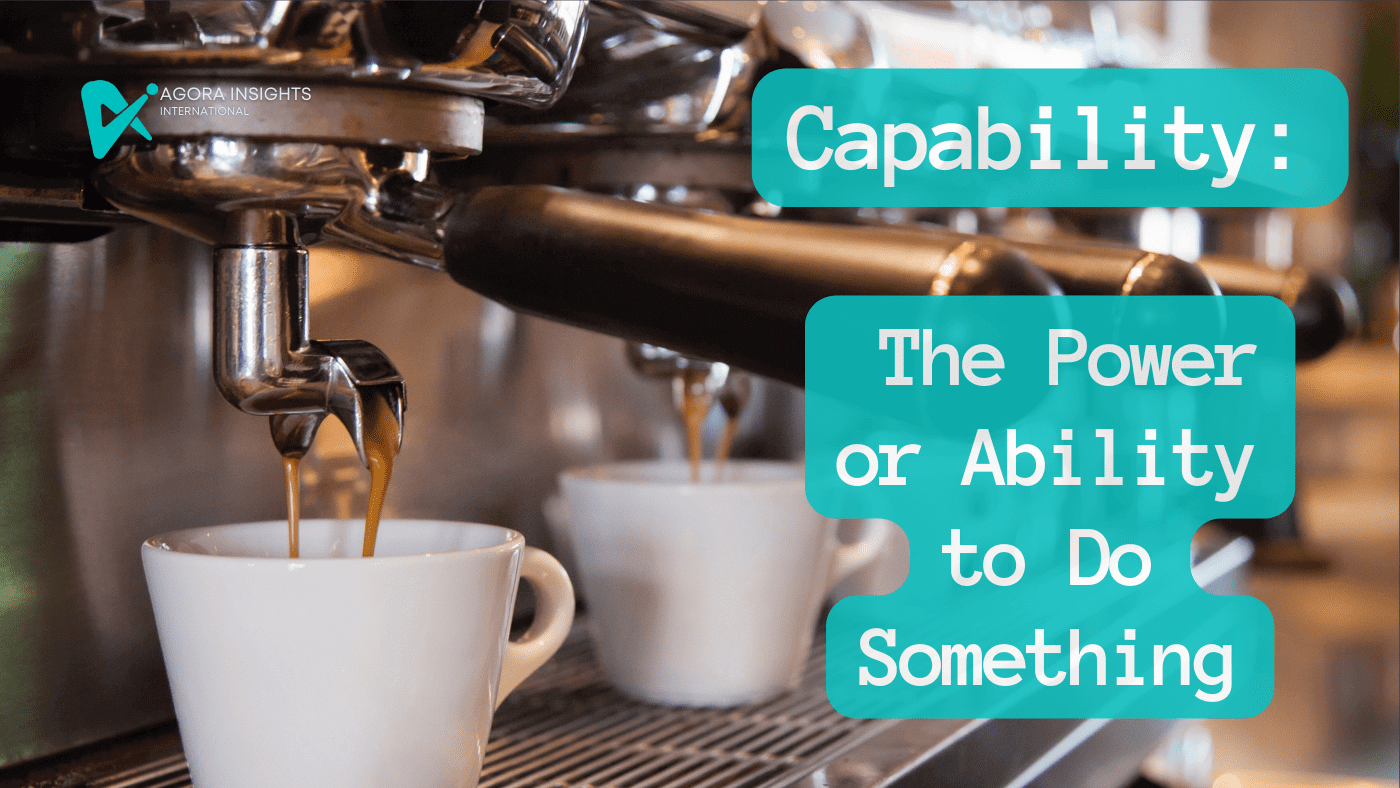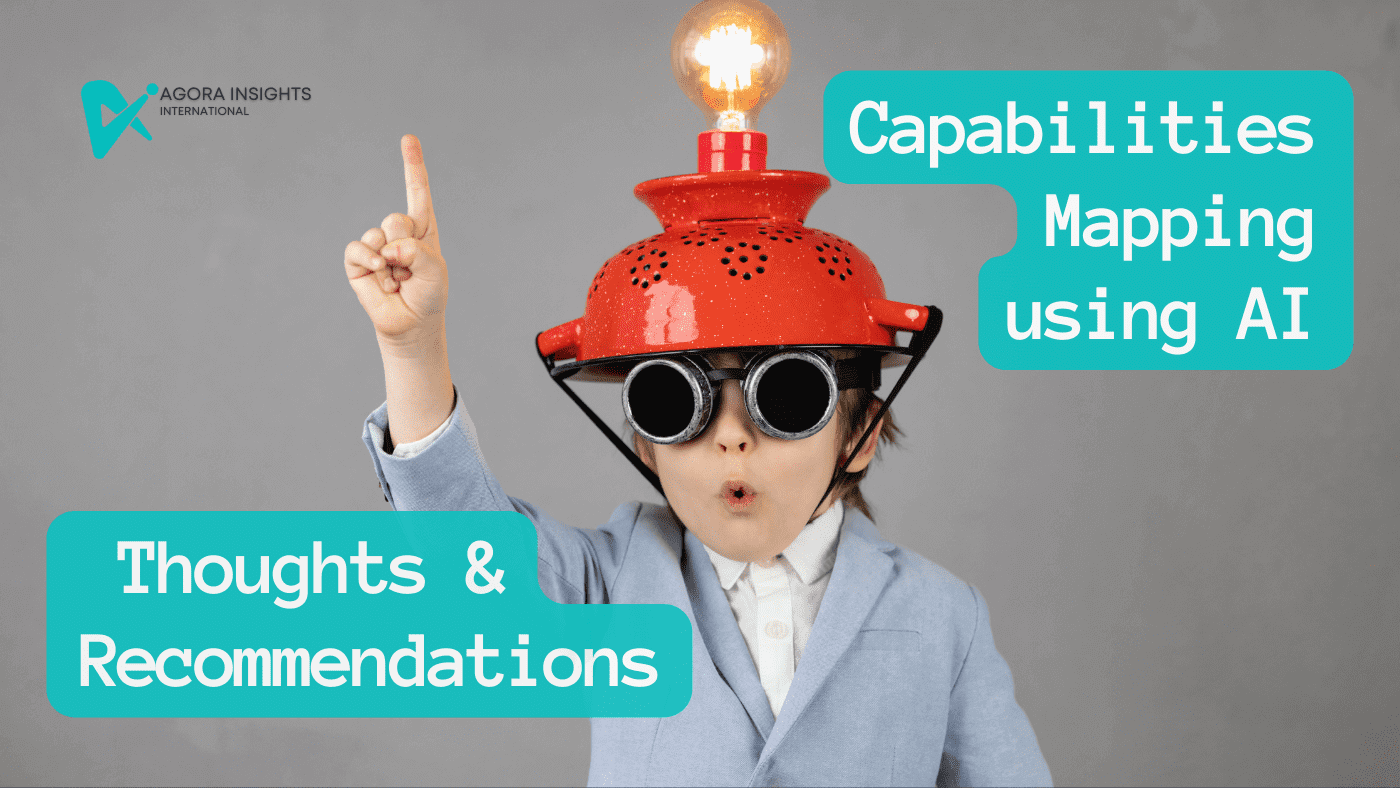Business Architecture Capabilities Mapping using AI: A Case Study with Supreme Coffee
In part 2 of 12 of this ChatGPT experiment, I'm concentrating on capabilities, which are a fundamental and foundational part of what we do as business architects. Understanding an organization's capabilities is critical for strategic planning and operational efficiency. Remember that business architecture capabilities mapping offers a structured method for visualising and comprehending what a company does.

We'll walk through a capabilities mapping approach using Supreme Coffee as a fictitious case study in this post. I'll start you off with an AI prompt :)
(Note: I use the term "we" just because it involved AI and myself in the activities interchangeably, I was the only person present lol)
Understanding the Business

Before looking into capabilities, we investigated Supreme Coffee. This step is crucial as it provides context for the capabilities map, ensuring alignment with the company's overall strategy and objectives. We explored their vision, mission, unique proposition, and philosophy, all of which paint a picture of a dynamic coffee shop looking to franchise.
ChatGPT, you are a business architect following the principles set out in the BIZBOK guide and listed above, help me analyze the business vision, mission, unique proposition, customer segments, and philosophy of [company x] based on the following: [enter content here]
Guiding Principles of Capabilities
The principles of business architecture capabilities guided our approach. These included, among other things, the importance of defining capabilities in business terms, focusing on business objects, ensuring capabilities define what a business does, ensuring capability stability, and understanding that capabilities decompose into more capabilities. Although, for this exercise I chose to leave business objects to information concepts as it just became too cluttered. It is far easier once you have clarified the capabilities.
Defining Level 1 Capabilities
We began defining the top-level (Level 1) capabilities with a firm understanding of the business and guiding principles. These high-level functions or activities were classified into three tiers: strategic, operational/customer-facing, and supporting. Strategic planning, coffee production, product development, customer service, and supply chain management were among them. ChatGPT struggled with the concept of tiers at first so it is important to provide clear guidelines.
Decomposing Capabilities
From the Level 1 capabilities, we further decomposed these into more detailed Level 2 and Level 3 capabilities. This process involved breaking down each capability into its next level, adding layers of detail to our level 1 capabilities. For example, our 'Strategic Planning' Level 1 capability was decomposed into 'Business Strategy Formulation', 'Market Analysis', and 'Competitor Analysis'.
Structuring the Capabilities Map
We constructed a capability table so that we could arrange as well as document our capabilities. This table contained a unique identifier, tier, level, capability names and definitions, outcomes, heat map ratings, and impact ratings. This produced a framework that was both structured and easy to read, allowing for a better grasp of the capabilities and how they impact the company. ChatGPT seemed to manage this quite well.
Heat Mapping
The process of heat mapping involves visually displaying the value and importance of each capability to the business. While AI can assist in many areas, the process of heat mapping is best done by individuals with a deep understanding of the business. This involves measuring the impact and value of each capability against strategic objectives and current performance. ChatGPT just gives you very generic responses that potentially take more time than it is worth..
Useful tips for business architecture capabilities and heat mapping:
- Identify strategic objectives: Clearly identify your business's strategic objectives. This will guide heat mapping capability evaluation and prioritisation. Know your company's goals.
- Determine skills: List your company's strengths. These help your company reach its goals. Know your business ecosystem's capabilities.
- Value and impact: Compare each capability to your business's strategic goals and performance. Consider revenue, cost reduction, customer happiness, competitive advantage, and corporate goals. Prioritise capabilities for analysis with this assessment.
- Subject matter experts: Heat map with business experts. Subject matter specialists should understand operations, technology, and market dynamics. Their input will improve heat mapping.
- Use AI for data analysis: Domain experts should execute heat mapping, but AI may help with data analysis and insights. AI can analyse enormous amounts of data, find trends, and deliver heat mapping insights.
- Heat maps: Use heat maps to demonstrate each capability's worth. Heat maps show how capabilities match strategic objectives and their business value. This picture aids organisational communication and decision-making.
- Update and refine: As business capabilities and priorities change, heat maps must be updated and refined. To stay aligned with the company's strategic direction, analyse business environment, market trends, and new technology.
Remember, the heat mapping process should be iterative and collaborative, involving key stakeholders from different departments and levels within the organization. While AI can help with some of it in terms of data, it isn't a great resource for truely understanding the ratings.
Aligning Capabilities with Business Objectives

Once our capabilities were defined, I reviewed the map to ensure alignment with Supreme Coffee's vision, mission, unique proposition, and philosophy. This crucial step validated the relevance and applicability of the capability map to the business's core values and strategic goals.
Final Thoughts and Recommendations

ChatGPT is a fantastic product that I highly recommend it to every business architect! It's also important to be mindful of its limitations when using it to develop your skills!
Limitations and notes:
- One of the most difficult aspects for me was that it occasionally forgot previous sections of the dialogue. It's like working with a learner driver and not being able to grab the controls.
- Second, I believe it is vital to have a backup of your information. It appears that you will need to periodically feed your information back into the chat. Scrolling can be tedious.
- Finally, with its present constraints on the amount of chats, using ChatGPT4 might be a real difficulty. This can have a significant impact on your information flow, especially when capabilities necessitate a significant amount of information processing, so be prepared!
Conclusion
To conclude, the capability mapping process can be a powerful tool for organizations and using AI to assist with the process is a valuable exercise. Remember you have to understand business architecture to be able to do this effectively.
Check out our Business Architecture Fundamentals with Ai course. Get free downloads and more
Reference
Business Architecture Fundamentals course
Post sponsored by Agora Insights Ltd


Post a Comment